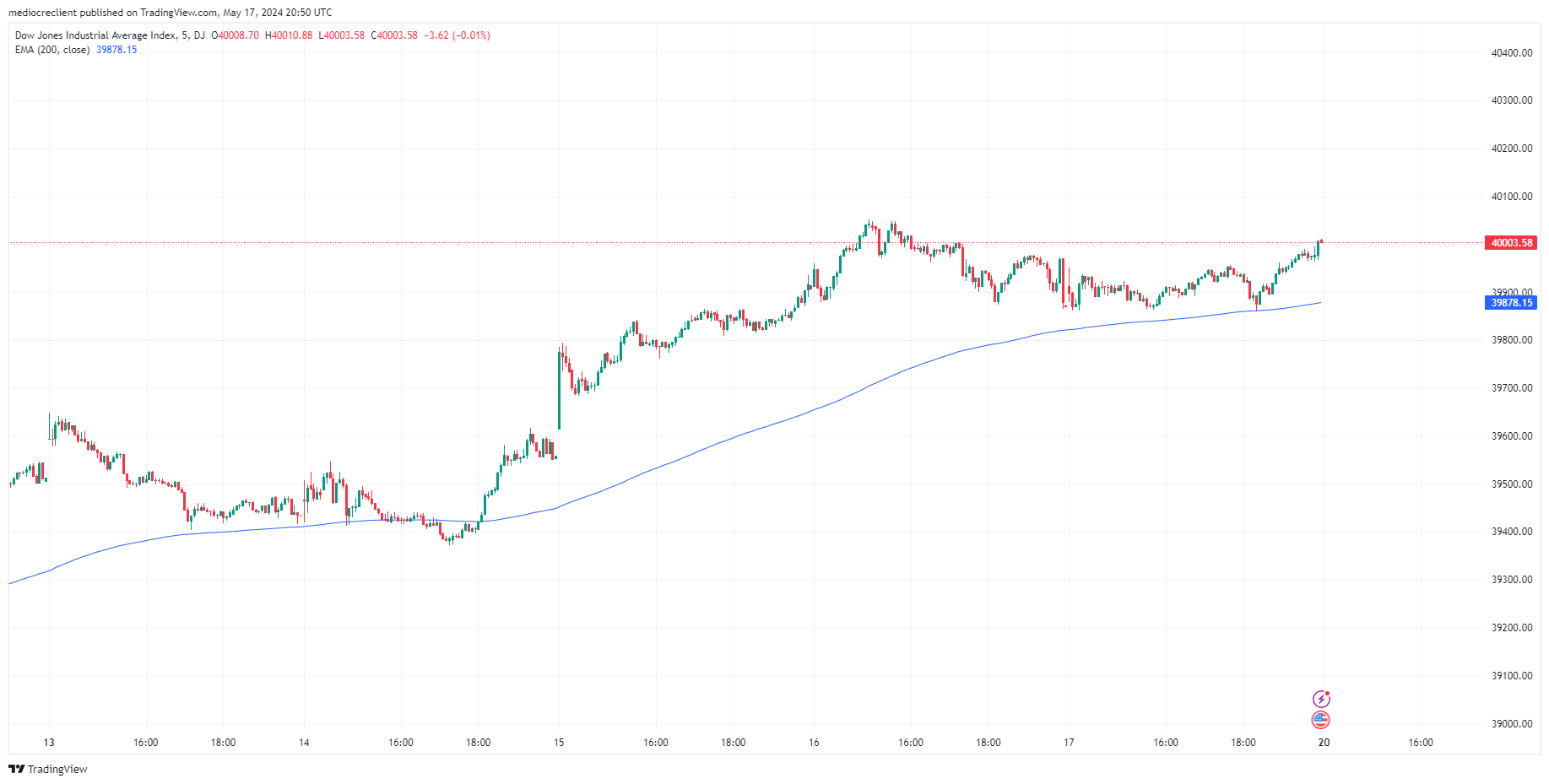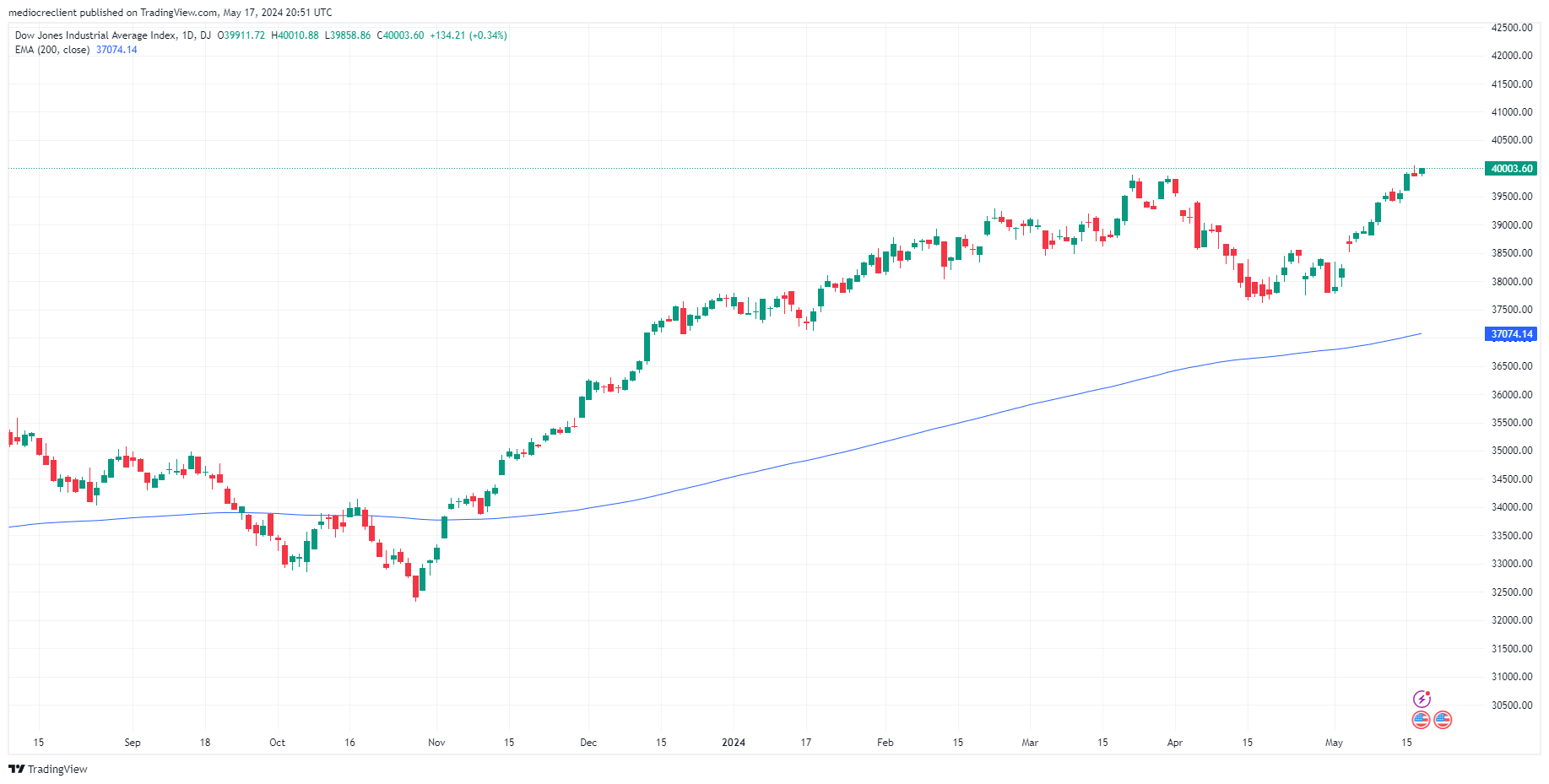Dow Jones Industrial Average closes above 40,000 in quiet Friday climb
- Dow Jones gains 130 points to end the week over 40,000.00.
- Record equity gains on rate cut hopes could prove to be short-lived.
- Fedspeak remains key focal point for markets.
The Dow Jones Industrial Average (DJIA) clsoed above the 40,000.00 major handle for the first time ever after markets wound down a hectic trading week that saw rate cut hopes return to the forefront after US Consumer Price Index (CPI) inflation eased to a three-month low. Easing inflation figures sparked a risk appetite rally that sent the Dow Jones over the 40,000.00 major price handle on Thursday as investors pin their hopes and dreams on the Federal Reserve (Fed) delivering at least two rate cuts before the end of the year.
Read more: Fed officials recognize overall inflation progress, but cautious tones remain
Despite easing inflation data this week, Fed officials have routinely talked down still-high market expectations. Fed Board of Governors member Michelle Bowman hit markets late in the Friday market session with cautionary comments highlighting that progress on inflation in 2024 has not been as good as many had hoped. Fed Governor Bowman also sees inflation remaining higher than markets expect, highlighting that further rate hikes are not off the table if inflationary pressures return to the data.
Dow Jones news
Despite record prints across the major US indexes, analysts have started to flash warnings signs that the record run-up in equities could lead to near-term volatility. According to Wells Fargo analyst Christopher Harvey, as quoted by CNBC Markets, investors should expect some choppiness in markets as the current investor narrative of bad news (easing economic conditions) meaning good news (rate cuts) could begin to unravel.
Two-thirds of the Dow Jones' constituent equities ended Friday in the green, with Caterpillar Inc. (CAT) leading the winners, climbing 1.58% on the day and settling at $356.27. On the low side, Amgen Inc. (AMGN) fell -0.71% to end Friday at $312.47 per share.
Dow Jones technical outlook
The Dow Jones Industrial Average closed just above 40,000.00 on Friday, etching in the highest-ever close for the major index. The DJIA also marked in a fourth consecutive bullish week, and the index is up over 6.5% in 2024.
The Dow Jones is up over 1% for the week, and a bullish Friday close will mean the index has gained ground for all but two of the last 12 consecutive trading days. Bulls remain firmly in control with the DJIA trading well above the 200-day Exponential Moving Average (EMA) at 37,067.12.
Dow Jones five minute chart
Dow Jones daily chart
Dow Jones FAQs
The Dow Jones Industrial Average, one of the oldest stock market indices in the world, is compiled of the 30 most traded stocks in the US. The index is price-weighted rather than weighted by capitalization. It is calculated by summing the prices of the constituent stocks and dividing them by a factor, currently 0.152. The index was founded by Charles Dow, who also founded the Wall Street Journal. In later years it has been criticized for not being broadly representative enough because it only tracks 30 conglomerates, unlike broader indices such as the S&P 500.
Many different factors drive the Dow Jones Industrial Average (DJIA). The aggregate performance of the component companies revealed in quarterly company earnings reports is the main one. US and global macroeconomic data also contributes as it impacts on investor sentiment. The level of interest rates, set by the Federal Reserve (Fed), also influences the DJIA as it affects the cost of credit, on which many corporations are heavily reliant. Therefore, inflation can be a major driver as well as other metrics which impact the Fed decisions.
Dow Theory is a method for identifying the primary trend of the stock market developed by Charles Dow. A key step is to compare the direction of the Dow Jones Industrial Average (DJIA) and the Dow Jones Transportation Average (DJTA) and only follow trends where both are moving in the same direction. Volume is a confirmatory criteria. The theory uses elements of peak and trough analysis. Dow’s theory posits three trend phases: accumulation, when smart money starts buying or selling; public participation, when the wider public joins in; and distribution, when the smart money exits.
There are a number of ways to trade the DJIA. One is to use ETFs which allow investors to trade the DJIA as a single security, rather than having to buy shares in all 30 constituent companies. A leading example is the SPDR Dow Jones Industrial Average ETF (DIA). DJIA futures contracts enable traders to speculate on the future value of the index and Options provide the right, but not the obligation, to buy or sell the index at a predetermined price in the future. Mutual funds enable investors to buy a share of a diversified portfolio of DJIA stocks thus providing exposure to the overall index.